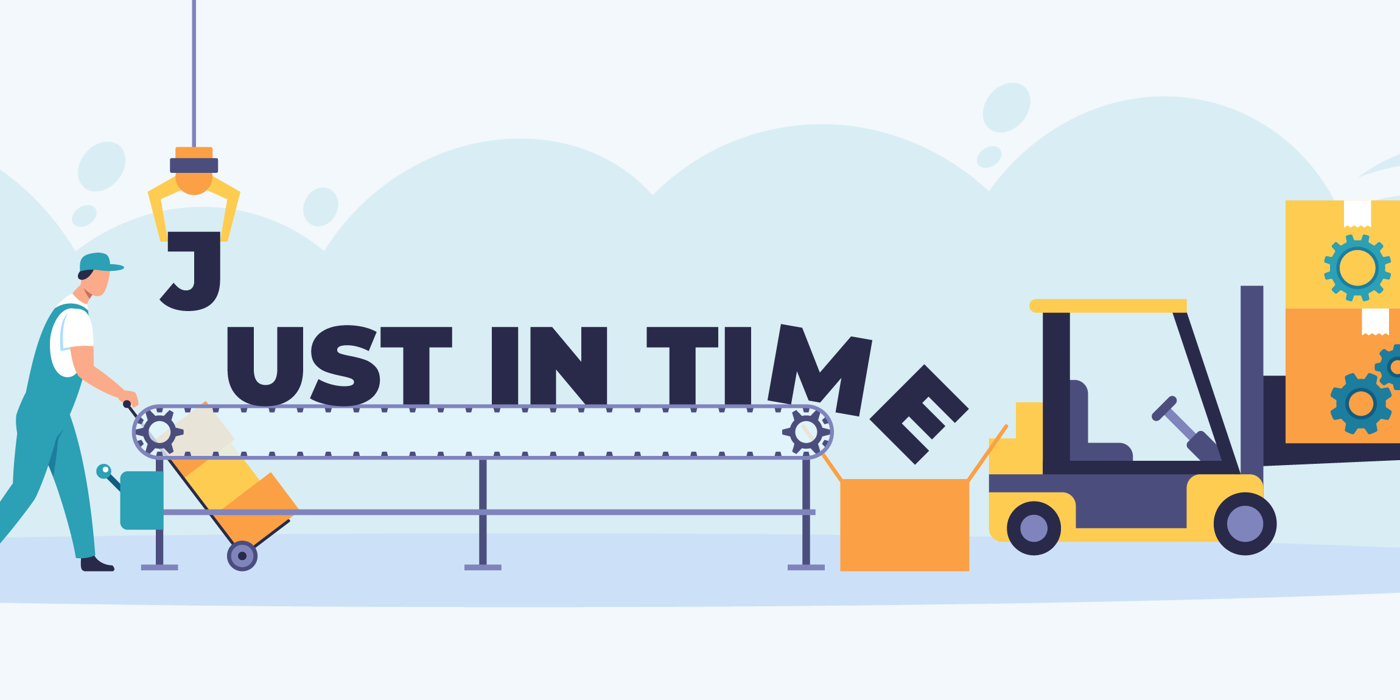Just-In-Time Inventory Management with eTurns TrackStock (Definition & Calculations)

Successful businesses are continuously searching for ways to be more efficient and cost-effective. In many cases, one of the best ways to boost profitability is by taking a closer look at inventory management systems. Businesses can create impactful cost savings and enhance their operational efficiency with just-in-time inventory management. Learn about the just-in-time inventory system and find out if this strategy is right for you.
What Is Just-In-Time Inventory?
Just-in-time inventory management is based on the goal of receiving materials and inventory right as they are needed and no sooner. It involves closely monitoring inventory levels to avoid excess stock, while also ensuring that there is an adequate supply to meet customer requirements and production or requisition schedules. By implementing just-in-time inventory, organizations strive to reduce the costs associated with carrying inventory, such as storage, shrinkage, and obsolescence expenses.
Why Is Just-In-Time Inventory Important?
The just-in-time inventory system is appealing due to its potential for reducing waste and costs. However, it’s important to develop a thorough understanding of the just-in-time inventory system before adopting this strategy.
This system is not the best fit for every business, but for those operating on a project basis or those who can forecast and plan with precision, this system can result in exciting cost savings. Businesses that leverage inventory management apps such as eTurns TrackStock are better equipped to utilize this type of inventory management. This is because they can access real-time quantity-on-hand data and accurate average daily usage data into inventory needs. In turn, their inventory management system allows them to receive stock only as it is needed for production or consumer demand. This means they are also able to increase operational efficiency, reduce inventory costs, and eliminate waste.
How Does Just-In-Time Inventory Work?
Just-in-time inventory management systems require a few key ingredients in order to run successfully:
- Accurate demand forecasting by tracking average daily usage: In order to pinpoint exact order timing and quantities, businesses must track average daily usage at the point-of-use. This is most conveniently done with a bar-code scanning mobile app or weight sensor technology that tracks usage. Without accurate forecasting, the risks of the just-in-time inventory system begin to outweigh the benefits, since this leaves openings for stockouts.
- Precise planning: Planning for quick turnaround times and lean production is critical for successful just-in-time inventory management. The more predictable a business is, the better suited it is for this inventory management strategy.
- Reliable suppliers: To prevent interruptions in production and protect customer satisfaction, it’s important to establish strong relationships with reliable suppliers. This helps ensure on-time deliveries and dependable product and supply quality with every order.
In addition to finding a supplier you can trust, honing in on the specifics of your inventory and supply needs is the other large piece of the just-in-time puzzle. Without the proper technology, this can be extremely difficult. However, with features like Min Max Tuning with eTurns TrackStock, businesses can automate usage data collection and set predictable parameters for min/max inventory levels.
Steps for Continuously Managing Just-In-Time Inventory
The set-up and continuous management of a just-in-time inventory system requires methodical planning and real-time follow-up. These four steps serve as a useful foundation for establishing and nurturing successful just-in-time inventory management.
- Establish supplier relationships: Communicating early and often with suppliers and vendors is one of the most impactful steps for a successful system. Without suppliers you can depend on, this system will not work because it relies on on-time delivery and precise follow-through.
- Set min/max inventory levels: The just-in-time inventory system relies on carrying enough inventory to complete immediate orders and projects, without paying to store excess materials. Determine the minimum and maximum stock levels required to meet customer demand while minimizing overstocking.
- Track inventory in real time: Continuously track inventory levels and implement effective inventory control mechanisms to ensure stock is replenished in a timely manner. Without keeping a constant eye on real-time inventory, the likelihood of stockouts increases. This is extremely important, yet very difficult with spreadsheet or clipboard methods. Solutions such as SensorBins lend real-time visibility to inventory levels, allowing for just-in-time inventory management.
- Fine-tune levels in response to data: Embrace technology to collect real-time and ongoing data about inventory usage and consumer trends. This will allow you to keep open communication with your suppliers and ensure your inventory levels remain appropriate for demand.
Advantages of Just-In-Time Inventory
When implemented correctly, just-in-time inventory management comes with a tempting set of advantages, including:
- Reduction in inventory costs: By avoiding overordering, companies save money on inventory.
- Reduction in rush shipments: By knowing when to order and in what quantity, companies eliminate unnecessary expenses on labor and expediting shipments.
- Reduction in storage costs: Without excess inventory, storage and warehousing costs decrease.
- Improved efficiency: Companies save on labor costs and leverage greater productivity with reduced time spent on order fulfillment, shorter production runs, and faster product turnaround.
- Decreased waste: By receiving goods only as needed, companies decrease waste.
How eTurns TrackStock Can Help You Achieve Just-In-Time Inventory
Without precise data and powerful technology, just-in-time inventory management is next to impossible – and unjustifiably risky. With eTurns TrackStock, you can:
- Track inventory usage
- Access real-time data
- Set min/max inventory levels
- Simplify your workflow
- Automate communications with your supplier
- All of which allow inventory optimization (removing unnecessary inventory) while maximizing service levels (never stocking out).
Each of these features and benefits of eTurns TrackStock means you can avoid common, costly pitfalls like overstocking. With this powerful software, you can leverage the cost-saving benefits and streamlined processes that come with just-in-time inventory systems. Contact us to learn more!




